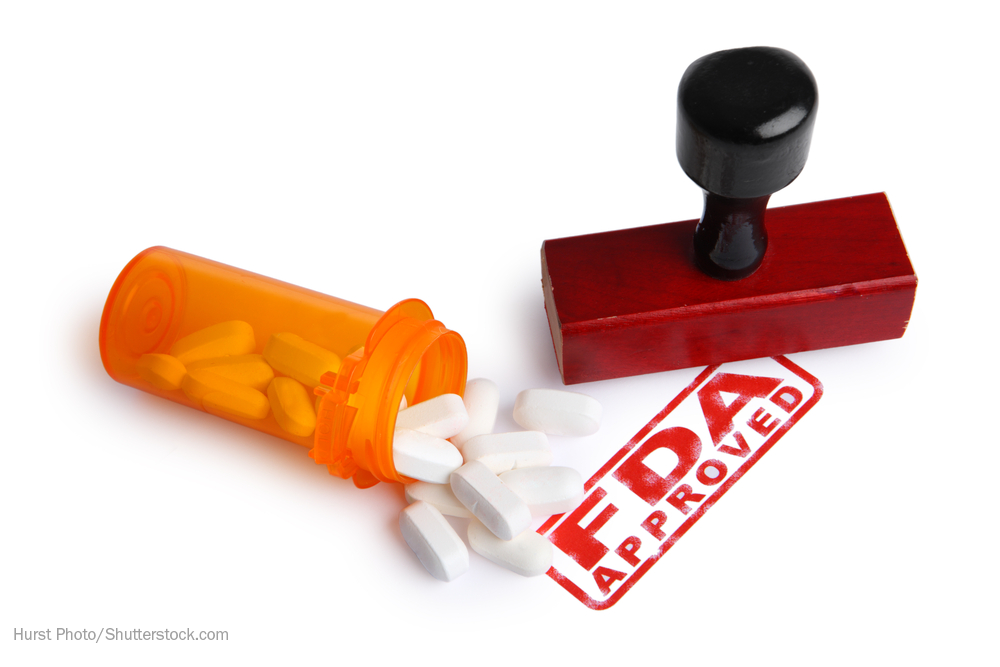Farxiga, Developed for Diabetes, Gets FDA Nod for Heart Failure
The FDA recently approved AstraZeneca’s Farxiga (dapagliflozin) for the treatment of heart failure with reduced ejection fraction (HFrEF) in adults with and without type 2 diabetes, marking the first time a drug in a class developed for diabetes was approved for heart failure even if diabetes is not present.

The FDA recently approved AstraZeneca’s Farxiga (dapagliflozin) for the treatment of heart failure with reduced ejection fraction (HFrEF) in adults with and without type 2 diabetes (T2D), marking the first time a drug in a class developed for diabetes was approved for heart failure even if diabetes is not present.
Heart failure affects around 6.5 million adults in the United States and was a contributing cause of one in eight deaths in 2017, according to the CDC.
The oral tablets are already indicated for adults to reduce the risk of cardiovascular (CV) death and hospitalization for heart failure. But with this step, Farxiga is now the first sodium-glucose co-transporter 2 (SGLT2) inhibitor to be approved to treat adults with HFrEF.
Use of SGLT2 inhibitors to treat heart failure has been envisioned for nearly 5 years, since results of the ground-breaking cardiovascular outcomes trial involving competitor empagliflozin (Jardiance) showed a reduction in cardiovascular events and death among patients with T2D, driven primarily by the reduction in hospitalization for heart failure. But AstraZeneca's DAPA-HF trial, presented in Paris last year, was the first to show an SGLT2 inhibitor produced the same protective benefits in patients regardless of diabetes status.
Related: Proving Biosimilars are Similar. Are Therapeutic Trials Necessary?
In 2019, Farxiga was approved by the FDA to reduce hospitalization risk for heart failure in adults with T2D and established CV disease or risk factors. The treatment is also currently indicated as an adjunct to diet and exercise to improve glycemic control in adults with T2D but is not recommended for individuals with type 1 diabetes (T1D) or for treating diabetic ketoacidosis.
“With the approval of Farxiga, we have reached a critical milestone to potentially transform heart failure treatment for the millions of people living with the condition in the United States,” says Mene Pangalos, executive vice president of BioPharmaceuticals R&D at AstraZeneca. “We are now one step closer to making a significant impact on their lives by providing a much-needed treatment to help reduce their disease burden and live longer.”
Earlier this year the FDA granted Farxiga priority review designation following a 2019 fast track designation. Previous studies have also found Farxiga is effective in reducing the risk of renal decline, kidney failure, and renal death. A recent phase 3 trial testing the efficacy of Farxiga on chronic kidney disease ended early due to a recommendation from the Data Monitoring Committee citing the drug’s “overwhelming efficacy.”
In a randomized, double-blind, placebo-controlled study of nearly 5000 participants, researchers found individuals with heart failure with reduced ejection fraction who received a once-daily dose of 10 mg of Farxiga exhibited fewer cardiovascular deaths, hospitalizations for heart failure, and urgent heart failure visits compared to controls receiving the placebo after 18 months.
Specifically, the phase 3 Farxiga And Prevention of Adverse-Outcomes in Heart Failure (DAPA-HF) trial showed that in addition to standard care, Farxiga “reduced the risk of the composite outcome of CV death or the worsening of HF versus placebo by 26% (absolute risk reduction [ARR] = 5% [event rate/100 patient years: 11.6 vs 15.6, respectively]; P < .0001) in patients with HFrEF.”
Throughout the trial duration, researchers found 1 CV death or hospitalization for heart failure or an urgent visit associated with the condition would be avoided for every 21 patients receiving Farxiga.
According to data from 12 placebo-controlled studies, the most common adverse events (AEs) associated with Farxiga 5mg, 10 mg, and placebo respectively were female genital mycotic infections (8.4% vs 6.9% vs 1.5%), nasopharyngitis (6.6% vs 6.3% vs 6.2%), and urinary tract infections (5.7% vs 4.3% vs 3.7%). These AEs are consistent with other trials of SGLT2 inhibitors.
This week on Tuning Into The C-Suite Briana Contreras spoke with Dr. Scott Hayworth, president and CEO of New York-based CareMount Medical. In this interview, the two discussed the importance of patients staying in contact with their doctors for the sake of reducing public health risks and to discuss ongoing care options with them.
Listen
Eric Levin talks PBMs and how Scripta is Tackling the Market's Challenges for Patients
July 22nd 2020MHE's Briana Contreras spoke with CEO of Scripta, Eric Levin. The two discussed the current state of the pharmacy benefit market and how the Scripta organization has been assisting its clients and their prescriptions prior to the COVID-19 pandemic and during.
Listen